About Nýggjastova
Nýggjastova is one of the oldest buildings in Tórshavn. It is thought to predate the year 1600. Nýggjastova is located in a cluster of houses, í Gongini, in an area locals used to refer to as ‘home in Tórshavn’. The location is known as a sheltered beauty spot with lovely light, which is probably why it was settled so early on. For many years Nýggjastova housed sorinskrivarin, the judge of the Faroe Court of Justice, but it is also the childhood home of the legendary Beinta, also known as Barbara, and V.U. Hammershaimb.
1600 hundreds
Peter Sørensen Broberg and Birgithe Bøgvad
The Danish judge Peter Sørensen Broberg and his Danish wife Birgithe Bøgvad move into the house. They are the parents of Bente Christine Broberg, who became known as Beinta. Her life became the subject of legends that transformed her into Angry Beinta, as she is termed in an oral account written down by Jákup Jacobsen, as well as in the book ‘Beinta’ by Hans A. Djurhuus from 1927. She was later called Barbara in Jørgen-Frantz Jacobsen’s eponymous book published in 1939, as well as in the 1997 Nils Malmros film by the same name.
1667
Bente Christine Broberg
Bente, Beinta, Angry Beinta or Barbara, beloved child has many names so the saying goes, was born in Nýggjastova and took over the house in 1667. The epitaph of this reputed lady of Old Tórshavn has over time undoubtedly been tinged by rumours, bragging, gossip, myth and a patriarchal zeitgeist. Beinta married three Danish priests. The first two died and the third lost his position owing to mental illness. Most accounts blame Beinta for these tragedies.
Legend, literature and cinema describe her as everything from a femme fatale to a witch well versed in the occult. She is also accused of abuse of power and mistreating her servants. Yet the contemporary source material available about Beinta speaks no ill at all of the vicar’s wife, who ended up with a very different fate and epitaph than most other Faroese women – then and now.
1729
Frederik Severinsen Schougaard Jonasen
Fredrik was the only son of Beinta and Her Jónas, who was Beinta’s first husband. Fredrik inherits the house by deed of gift from Peder Arrhebo, who was Beinta’s third husband, and who she ended her days with in poverty. Beinta also had three daughters.
1755
Samuel Pedersen Lamhauge
Samuel Pedersen Lamhauge, who was Prime Minister and lived in Nýggjastova, dies. He was married to Armgard Maria Weyhe. They were the great great great grandparents of the renowned V. U. Hammershaimb.
1766
Jørgen Frants Hammershaimb
Jørgen Frants Hammershaimb, the king’s bailiff resident in Nýggjastova, dies. He was married to Elisabeth Christine Samuelsdatter. They were the great great grandparents of V. U. Hammershaimb (great grandparents on his father’s side). Later Armgard Maria Lund, d. 1781, and her husband Ulrich Adolf Lund, d. 1774, move into Nýggjastova. They are V. U. Hammershaimb’s grandparents.
1795
Helene Christine Egholm
Helene Christine Egholm, married to seafarer Samuel Egholm, overtakes Nýggjastova. They are the grandparents of V. U. Hammershaimb.
1822
Armgard Maria Hammershaimb
Helena and Samuel’s daughter has her own daughter named Armgard Maria. She marries Jørgen Frants Hammershaimb, who was the last prime minister of the Faroese Islands before the dissolution of Parliament in 1816. When he, who grew up in Fútastova right above Nýggjastova, passed in 1820, she moved from the prime minister’s homestead á Steig in Sandavágur back to Tórshavn to live with her mother in Nýggjastova. She brought along the children Maria Louvise and Venceslaus Ulricus. Armgard Maria takes over the house in 1834.
1822- 1831
Venceslaus Ulricus Hammershaimb
Venceslaus Ulricus Hammershaimb or V. U. Hammershaimb, as he is usually known, is often termed the father of the written Faroese language. He learnt how to read from his grandfather, who was a bailiff and lived in the neighbouring house, Fútastova. V.U. learnt how to write from Jens Davidson, who was secretary to the Danish High Commissioner. In 1831 V.U. Hammershaimb moved to Denmark to study. He completes his upper secondary diploma in 1839 and then enrols at the University of Copenhagen, where he starts reading theology.
Around this time a new cultural current swept the Nordic Region. It is the dawn of the romantic period and for its devotees the mother tongue was practically sacred, and the older it was the greater its prestige. Although V.U was reading theology he was passionate about the Old Norse language. It is undoubtedly the confluence of all these factors, which motivates him to decide to do something decisive for the Faroese language and literature. He moves back to the Faroe Island in 1855 and is employed first as a priest in the North Streymoy parish, and later he takes up the position of dean and moves to Nes village. He returns to Denmark in 1878 where he dies in 1909.
V.U.’s linguistic and literary endeavours became his lasting legacy to the Faroese people, culture, language and identity. His works cemented a stable written form of Faroese, which, with the exception of a few minor amendments, we use to this day.
1867
Madam A. M. Hammershaimb
Nýggjastova becomes Mdm. Hammershaimb. A residential home.
1893
Hjalmar Hammershaimb
V. U. Hammershaimb’s son, Hjalmar Hammershaimb, receives Nýggjastova. The photo was taken the following year.
1896
Johannes Bærentsen
Shoemaker Johannes Bærentsen purchases Nýggjastova from Hjalmar Hammershaimb for the sum of DKK 1,800. He opens a workshop at the house.
1937
Edward Bærentsen
Edward Bærentsen, who is a shoemaker like his father, inherits Nýggjastova from his father and sister. He passes away in 1954.
1966
Kate Niclasen
Kate Niclasen inherits Nýggjastova from her parents.
1988
Eirikur Lindenskov and Ingun Schiller
Eirikur Lindenskov and Ingun Schiller buy Nýggjastova from Kate Niclasen

